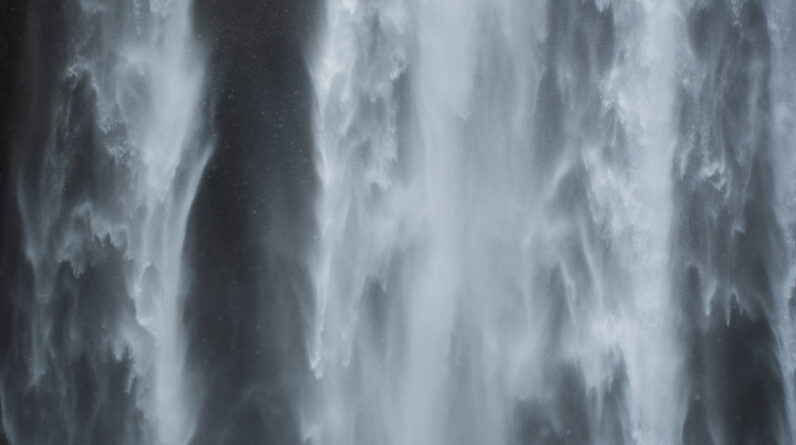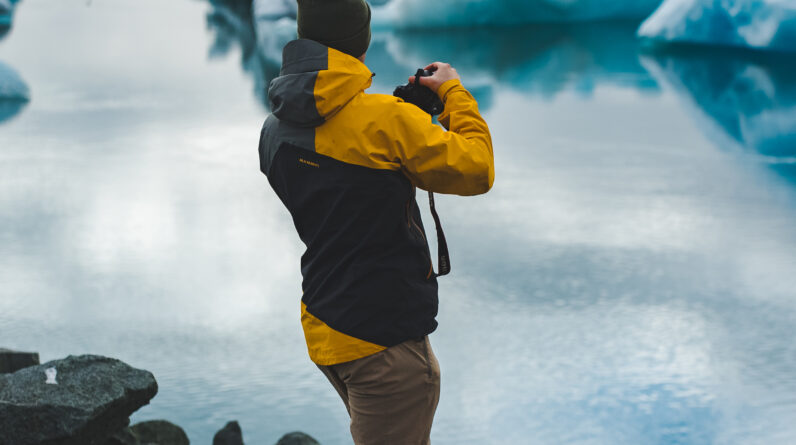
Have you ever wondered how those sleek and sturdy kayaks are made? Look no further, because in this article, you will discover the step-by-step process of creating your very own kayak. From selecting the right materials to assembling the frame, and finally finishing it off with a waterproof sealant, this guide will walk you through the essential techniques and tools needed to bring your kayak dreams to life. So, grab your tools and let’s get started on this exciting and fulfilling journey of making your own kayak!

Choosing the Right Materials
When it comes to making your own kayak, choosing the right materials is crucial to ensure a successful and durable build. There are several factors to consider, starting with the type of kayak you want to make. Different types of kayaks have specific requirements for materials, so it’s essential to choose the appropriate ones for your desired kayak design.
Selecting the Type of Kayak
Before diving into selecting materials, you need to determine what type of kayak you want to build. There are various types to choose from, such as recreational, touring, sea, whitewater, and fishing kayaks. Each type has its unique characteristics and intended use. Consider factors like stability, speed, maneuverability, and storage capacity when deciding on the type of kayak that suits your needs.
Considerations for Materials
When it comes to kayak materials, you have a few options to choose from. The most common materials used for kayak construction include wood, fiberglass, carbon fiber, and plastic. Each material has its pros and cons, so it’s crucial to consider factors such as weight, durability, cost, and ease of construction.
Choosing the Hull Material
The hull is the bottom part of the kayak that comes into direct contact with the water. It plays a significant role in the kayak’s stability, maneuverability, and overall performance. Fiberglass and plastic are often the popular choices for hull materials. Fiberglass provides a good balance of weight, durability, and cost, while plastic (such as high-density polyethylene) offers excellent durability and impact resistance.
Selecting the Deck Material
The deck is the top part of the kayak and contributes to its overall rigidity and strength. For deck materials, fiberglass and carbon fiber are commonly used. Fiberglass is a popular choice due to its versatility, ease of use, and affordability. On the other hand, carbon fiber is known for its exceptional strength-to-weight ratio, making it ideal for high-performance kayaks.
Deciding on the Cockpit Material
The cockpit is the area where you sit inside the kayak. It needs to be comfortable, durable, and easy to maintain. Many kayakers opt for neoprene or foam for the cockpit material. Neoprene is a synthetic rubber that provides excellent insulation and flexibility. Foam, on the other hand, offers comfort and cushioning, making it a great choice for long kayaking trips.
Choosing the Bulkheads Material
Bulkheads are the partitions inside the kayak that separate the different compartments. They provide structural integrity and help with buoyancy and flotation. Common materials for bulkheads include plastic, fiberglass, or marine-grade plywood. Plastic bulkheads offer durability and water resistance, while fiberglass and marine-grade plywood provide strength and stability.
Gathering Tools and Equipment
Once you have chosen the materials for your kayak, it’s time to gather the necessary tools and equipment for the construction process. Having the right tools will make the building process smoother and more efficient.
Essential Tools
Some essential tools you will need include:
- Measuring tape or ruler: for accurately measuring and marking the dimensions of the kayak parts.
- Saw: for cutting the kayak materials according to the specified measurements.
- Drill and drill bits: for creating holes for fasteners and attaching different parts of the kayak.
- Sandpaper or sanding block: for smoothing rough edges and surfaces of the kayak pieces.
- Clamps: for holding parts together while they dry or when securing during assembly.
- Screwdriver or nut driver: for tightening screws or nuts during assembly.
- Paintbrush or roller: for applying protective coatings or finishes to the kayak.
Optional Tools
While not necessary, these additional tools can be helpful for certain construction methods or personal preferences:
- Jigsaw: for making curved or intricate cuts in the kayak materials.
- Router: for creating smooth and finished edges on the kayak pieces.
- Heat gun: for shaping and bending certain materials like plastic or fiberglass.
- Power sander: for speeding up the sanding process and achieving a smoother finish.
Safety Equipment
Don’t forget about safety! Protecting yourself during the construction process is essential. Some safety equipment to consider includes:
- Safety goggles or glasses: for eye protection from flying debris or particles.
- Dust mask or respirator: for filtering out dust and harmful fumes.
- Gloves: for hand protection and a better grip on tools and materials.
- Hearing protection: for reducing noise exposure from power tools.
Preparing the Materials
Preparation is key to ensure that your kayak construction goes smoothly. This involves cutting the materials to the correct dimensions, preparing the cockpit area, bulkheads, and sanding the pieces to create smooth surfaces.
Cutting the Hull Pieces
Start by measuring and marking the dimensions of the hull pieces on your selected material, whether it’s fiberglass, plastic, or wood. Use a saw appropriate for the material to cut the pieces according to the markings. Take your time and ensure accurate cuts to achieve properly fitting parts.
Cutting the Deck Pieces
Similar to cutting the hull pieces, measure and mark the dimensions of the deck pieces on your chosen material, such as fiberglass or carbon fiber. Use a saw or jigsaw to cut the deck pieces. Pay attention to any curves or intricate shapes in the design and make precise cuts to achieve the desired shape.
Preparing the Cockpit Area
If you’re using neoprene or foam for the cockpit material, measure and shape it to fit the designated cockpit area. Neoprene can be easily cut with scissors and shaped accordingly. Foam may require more intricate cutting and shaping using a saw or knife. Ensure that the cockpit area is smooth and free from any rough edges that may cause discomfort.
Preparing the Bulkheads
If using plastic bulkheads, measure and cut them to fit the designated compartments in the kayak. If using fiberglass or marine-grade plywood, measure and shape them accordingly. Sand the cut edges to eliminate any sharp edges or imperfections.
Sanding and Smoothing the Pieces
Once all the pieces are cut, it’s time to sand and smooth the surfaces. Use sandpaper or a sanding block to remove any rough edges or imperfections on the hull, deck, cockpit, and bulkhead pieces. This step ensures a better fit when assembling the kayak and creates a smoother finish for the final product.
Applying Protective Coating
Before moving on to assembly, consider applying a protective coating to the kayak pieces. For fiberglass or carbon fiber, this may involve applying a layer of epoxy resin or clear coat to enhance durability and longevity. Consult the specific product instructions and allow adequate drying time before proceeding to the assembly stage.
Assembling the Hull
Now that the materials are prepared, it’s time to start assembling the kayak. The hull assembly is one of the most critical steps in the construction process, as it forms the foundation of the kayak’s structure.
Joining the Bottom and Side Panels
Begin by attaching the bottom panel to the side panels using a suitable joining method, such as stitching, gluing, or riveting. Ensure that the panels are aligned correctly and securely fastened, following the instructions for your chosen materials. Take care to reinforce the joints to provide strength and prevent water leakage.
Placing and Securing Bulkheads
Next, position the bulkheads into their designated compartments inside the kayak hull. Use the appropriate fastening method, such as screws or adhesive, to secure the bulkheads firmly in place. This step helps create separate storage compartments and provides structural integrity to the kayak.
Attaching Bow and Stern Pieces
Attach the bow and stern pieces to the hull to complete the overall shape of the kayak. These pieces may require additional reinforcement or sealing to ensure a watertight seal. Follow the specific instructions for your chosen materials and take care to align and fasten the pieces securely.
Reinforcing the Seams
To enhance the kayak’s strength and durability, reinforce the seams between the panels. This can be done using fiberglass tape, carbon fiber tape, or additional layers of the chosen material, depending on your construction method. Reinforcing the seams helps prevent water leakage and improves the overall structural integrity of the kayak.
Filling Gaps and Sealing Edges
Inspect the kayak hull for any gaps or spaces between the assembled pieces. Fill these gaps with the appropriate sealant or filler material to ensure water cannot penetrate the kayak. Pay close attention to the edges and ensure they are smooth and sealed properly, as this will help improve the kayak’s performance.

Building the Deck
After assembling the hull, it’s time to focus on building and attaching the kayak’s deck. The deck provides additional rigidity, protection, and storage options for the kayak.
Attaching the Cockpit Rim
Start by attaching the cockpit rim to the cockpit area of the kayak. This can be done using screws or rivets, depending on the chosen materials. Ensure a secure attachment and proper alignment to create a tight seal once the cockpit material is installed.
Connecting the Deck Panels
Connect the pre-cut deck panels according to your kayak design. Use the appropriate fastening method, such as stitching, gluing, or riveting, to join the panels securely. Take care to align the panels accurately and create a smooth transition between them.
Adding Coaming and Hatches
The coaming refers to the raised edge around the cockpit area, which helps secure the spray skirt and keeps water out. Attach the coaming to the cockpit rim, following the instructions for your chosen materials. If desired, add hatches to the deck for additional storage compartments, ensuring they are watertight and securely fastened.
Reinforcing and Sealing the Deck
To strengthen the deck and ensure water resistance, consider reinforcing critical areas with additional layers of your chosen material. This can be done by applying fiberglass or carbon fiber tape, or using additional layers of the same material. Seal any gaps or edges with the appropriate sealant or filler to prevent water penetration.
Creating the Cockpit
The cockpit is where you will spend most of your time while kayaking, so it’s essential to create a comfortable and functional space.
Shaping the Cockpit Opening
If using neoprene or foam for the cockpit material, shape the material to fit the cockpit opening by cutting it to the desired size. Ensure a snug fit that allows for easy entry and exit, while still maintaining a good seal with the cockpit rim.
Adding Hip Pads and Support
To enhance comfort and stability, consider adding hip pads or support structures inside the cockpit. These help provide a better fit and control over the kayak. Depending on your personal preferences, you can use foam pads, inflatable hip braces, or customized support structures.
Installing the Seat
Install the kayak seat according to the specific instructions for your chosen seat model. Ensure that it is securely attached and provides proper support and comfort. The seat should be positioned in a way that allows for efficient paddling and body alignment.
Attaching Footrests
Add footrests to the kayak to provide stability and help with paddling technique. Footrests can be adjustable or fixed, depending on your preference. Ensure they are securely attached and allow for a natural and comfortable foot position.
Securing Adjustable Thigh Braces
Thigh braces help you maintain better control of the kayak and enhance your paddling performance. If desired, install adjustable thigh braces to provide a customized fit. These braces can be adjusted to suit your leg length and personal comfort level.
Adding Other Comfort Features
Consider additional comfort features such as backrests, cushions, or padding, to enhance your overall kayaking experience. These features can be customized based on individual preferences and can greatly contribute to your comfort and enjoyment on the water.

Applying Finishing Touches
As your kayak nears completion, it’s time to apply finishing touches that enhance its appearance, functionality, and ease of use.
Sanding and Smoothing the Kayak
Thoroughly sand the entire kayak, both inside and outside, to achieve a smooth and polished finish. Pay attention to any rough spots, imperfections, or uneven surfaces. Use fine-grit sandpaper or sanding blocks to achieve the desired smoothness.
Applying Protective Finish
To protect the kayak from the elements and prolong its lifespan, apply a protective finish. This can be a varnish, clear coat, or marine-grade paint, depending on the materials used and the desired aesthetic appeal. Follow the specific instructions for your chosen finish and apply multiple coats for optimal protection.
Adding Handles and Perimeter Lines
Install handles on the kayak for easy lifting and maneuvering. These handles can be attached to the bow and stern or the sides, depending on your preference. Additionally, add perimeter lines along the sides of the kayak to provide additional grab points and safety features.
Installing Deck Rigging and Bungee Cords
For added storage options, install deck rigging and bungee cords on the deck of your kayak. These can be used to secure gear, such as dry bags or extra paddles, ensuring they are easily accessible while on the water. Attach these features securely to prevent any loss of equipment.
Adding Drain Plugs or Scupper Holes
To provide drainage for any water that enters the kayak, consider adding drain plugs or scupper holes. These features allow water to exit the kayak, ensuring it remains dry and comfortable during your paddling adventures. Follow the specific instructions for your chosen method and materials.
Testing and Adjustments
Before taking your kayak out on the water, it’s essential to perform some tests and make any necessary adjustments to ensure a safe and enjoyable experience.
Dry Fit and Alignment Check
Perform a dry fit to ensure that all the components of your kayak fit together properly. Check for any gaps, misalignments, or loose parts. Make sure that all the connections are secure and that the hull and deck are aligned correctly.
Test Floating and Stability
Take your kayak to a calm body of water and perform a float test. Ensure that the kayak floats properly, without any noticeable imbalances or stability issues. This test allows you to verify the buoyancy and stability of your kayak before venturing further.
Adjusting Seat and Footrests
During the float test, assess the positioning of your seat and footrests. Make any necessary adjustments to ensure proper fit, comfort, and efficient paddling technique. Your seat and footrests should provide stability and support without causing any discomfort or strain.
Fine-tuning Performance and Handling
Once you are comfortable in your kayak, take it for a test paddle and assess its performance and handling characteristics. Pay attention to factors such as speed, maneuverability, and stability. If any adjustments are needed, make them gradually and test the kayak’s performance again until you are satisfied.
Maintenance and Care
To keep your kayak in optimal condition and ensure its longevity, regular maintenance and care are essential.
Cleaning the Kayak
After each use, rinse your kayak with fresh water to remove any saltwater or debris. Clean the inside and outside of the kayak using a gentle, non-abrasive cleaner. Remove any excess water and allow the kayak to dry completely before storing or transporting it.
Inspecting for Damage
Periodically inspect your kayak for any signs of damage, such as cracks, dents, or loose fasteners. Check the hull, deck, cockpit area, and all attachments. Repair any damage promptly to prevent further deterioration and maintain the kayak’s structural integrity.
Repairing Cracks or Holes
If you come across any cracks or holes, it’s crucial to repair them as soon as possible. Depending on the size and type of damage, you may need to use fiberglass patches, epoxy resin, or specialized repair kits. Follow the specific instructions for repairing your chosen kayak material and ensure a thorough and sturdy repair.
Regular Maintenance Practices
In addition to cleaning and inspecting your kayak, there are a few other maintenance practices to consider. Protect your kayak from prolonged exposure to extreme heat or UV rays by storing it in a shaded area or using a protective cover. Check and tighten any loose fasteners periodically. Apply a fresh coat of protective finish as needed to maintain the kayak’s appearance and protection.
Conclusion
Congratulations! You have successfully built your very own kayak. By choosing the right materials, gathering the necessary tools and equipment, and following each step of the construction process, you have created a personalized, high-quality kayak that suits your needs and preferences.
Remember to conduct all necessary tests and adjustments before venturing out on the water. Regular maintenance and care will help ensure that your kayak remains in excellent condition for many memorable paddling adventures to come.
With your new kayak, you can now explore vast waterways, enjoy peaceful moments on serene lakes, and embark on exciting kayaking expeditions. So grab your paddle, get on the water, and appreciate the fruits of your labor as you embrace the joy and freedom that kayaking offers. Happy paddling!









